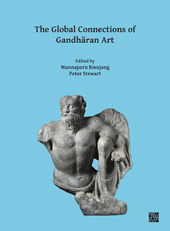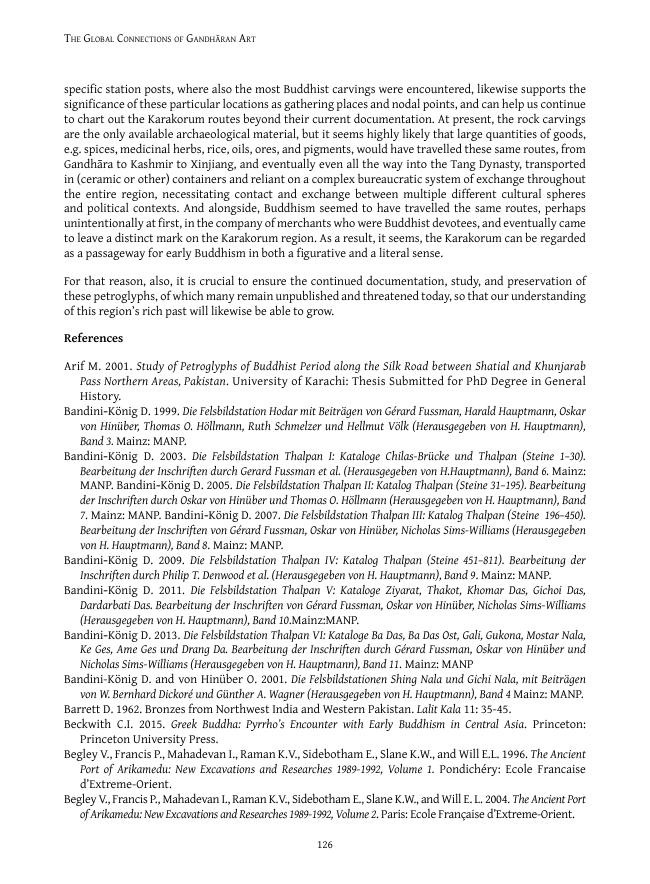The Global Connections of Gandhāran Art : Proceedings of the Third International Workshop of the Gandhāra Connections Project, University of Oxford, 18th-19th March, 2019
276 p.
Gandhāran art is often regarded as the epitome of cultural exchange in antiquity. The ancient region of Gandhāra, centred on what is now the northern tip of Pakistan, has been called the âÂcrossroads of Asia'. The Buddhist art produced in and around this area in the first few centuries AD exhibits extraordinary connections with other traditions across Asia and as far as the Mediterranean. Since the nineteenth century, the Graeco-Roman associations of Gandhāran art have attracted particular attention. Classically educated soldiers and administrators of that era were astonished by the uncanny resemblance of many works of Gandhāran sculpture to Greek and Roman art made thousands of miles to the west. More than a century later we can recognize that the Gandhāran artists' appropriation of classical iconography and styles was diverse and extensive, but the explanation of this âÂinfluence' remains puzzling and elusive. The Gandhāra Connections project at the University of Oxford's Classical Art Research Centre was
initiated principally to cast new light on this old problem.volume is the third set of proceedings of the project's annual workshop, and the first to address directly the question of cross-cultural influence on and by Gandhāran art. The contributors wrestle with old controversies, particularly the notion that Gandhāran art is a legacy of Hellenistic Greek rule in Central Asia and the growing consensus around the important role of the Roman Empire in shaping it. But they also seek to present a more complex and expansive view of the networks in which Gandhāra was embedded. Adopting a global perspective on the subject, they examine aspects of Gandhāra's connections both within and beyond South Asia and Central Asia, including the profound influence which Gandhāran art itself had on the development of Buddhist art in China and India.
Special access authorizations may apply; please contact us for further information.
-
Information
ISBN: 9781789696967
DISCIPLINES
KEYWORDS
- Gandhāran art, Pakistan, global connections, Hellenistic Greek rule, Roman Empire, Central Asia



